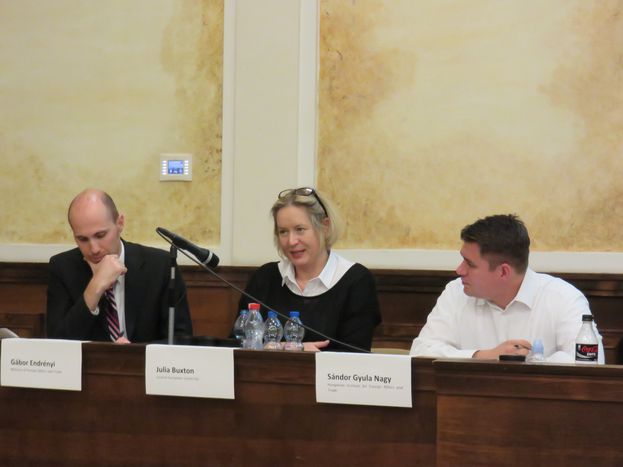
Comparing Latin America and East Europe: An intellectual experiment at Budapest conference
Published on
A conference has taken place that helped to create a platform for intellectual discussion on two world regions that are not typically compared: Latin America and Eastern Europe. For those who were not in attendance, this article provides an insight to the interesting presentations about drugs, migration, and Chinese investment that were given at the LatinEast Conference.
The second annual LatinEast Conference was held at Corvinus University in Budapest, Hungary and was organized by the Karl Polanyi Research Center of Global Social Sciences. During the public, daylong event, speakers and audience alike were challenged to explore the value of discussing the Latin American and Eastern European regions.
 The event itself provided a unique picture of Hungary’s global community with participants coming from both Latin America and Eastern Europe and also from other regions of the world. This multi-cultural representation alone gave merit for the value of discussing these countries within the same room.
The event itself provided a unique picture of Hungary’s global community with participants coming from both Latin America and Eastern Europe and also from other regions of the world. This multi-cultural representation alone gave merit for the value of discussing these countries within the same room.
The keynote speaker, Dr. Béla Greskovits of Central European University, presented an interesting and easy-to-follow methodological framework. He emphasized theories of dependency, capitalism and Polanyian political economy in a way that even those of us in the audience who are not social scientists could follow.
Greskovits warned not to draw comparisons that don’t make sense. For as many similarities that can be observed between and within these regions, there are a large number of differences, too.
A later presentation, given by another Central European University professor, Dr. Julia Buxton, looked at the trends of drug trafficking and security. Buxton made a strong opening statement by saying that she “found the task of comparing Latin America and Central-East Europe in this context very challenging.”
Yet, by the end of her presentation, Buxton had made a compelling case for where each region is positioned in the war on drugs. The declaration of this so-called war, a pivotal moment in the drug policy debate, has deeply affected Latin America. On the other side, East Europe, a region known primarily for the production and consumption of synthetic-made drugs, is not involved. Buxton pointed out that “drug policy remains overwhelmingly focused on naturally occurring drugs” when the real challenges facing the international community is synthetic drugs. 
Another interesting and not often considered aspect of drug policy in these areas is that “threats in Eastern Europe are coming from inside, not outside,” as is the case in Latin America, where the United States is heavily involved. As Buxton cleverly questioned, could the world imagine military troops bombing synthetic drug labs in the European Union, as they do natural drug farms in Latin America?
The conference also answered to those among us who wondered about the social and cultural implications of Latin American-East European exchanges. According to Balint Tolmar with the University of Exeter in the United Kingdom, Hungary and Cuba’s economic exchanges previous to East European transition led to migration patterns that had a far-reaching impact.
After the second half of the 1970’s, a labour exchange contract between the two nations brought nearly 2,000 Cubans to Hungary for work. However, these workers were demographically interesting, as the majority of them were women brought to live on the margins of Hungarian society, working and staying in textile plants. By the late 1980’s, the contract ceased due to fears of intermarriage within a time of political economic shifts.
At the end of a full day of presentations, Mate Deak from the University of Pecs, spoke candidly on Chinese investment strategies in the regions of Eastern Europe and Latin America, both of which China views as strategic partners. China has therefore invested in construction of a high-speed train to reduce travel time between Budapest, Hungary and Beograd, Serbia from 8 hours route to only 2.5 hours. This is part of a bigger locomotive project to connect Eastern Europe more directly to Greek port cities.
China’s transportation development projects do not end there. China is also financing a new canal costing 50 billion USD through Nicaragua. The completion of such a canal would mean that the United States is no longer the only nation to control waterways between two world oceans. In sight of further investment opportunities, China is strengthening strategic ties with both regions.
Although the event carried on throughout the day, the discussions were engaging and interesting for audience members. The Karl Polanyi Research Center can be commended for the initiating the thought-provoking task of comparing two regions that are not often looked at side-by-side. Scholars of varying fields and expertise levels anticipate the third annual conference, targeted for fall of 2016.



